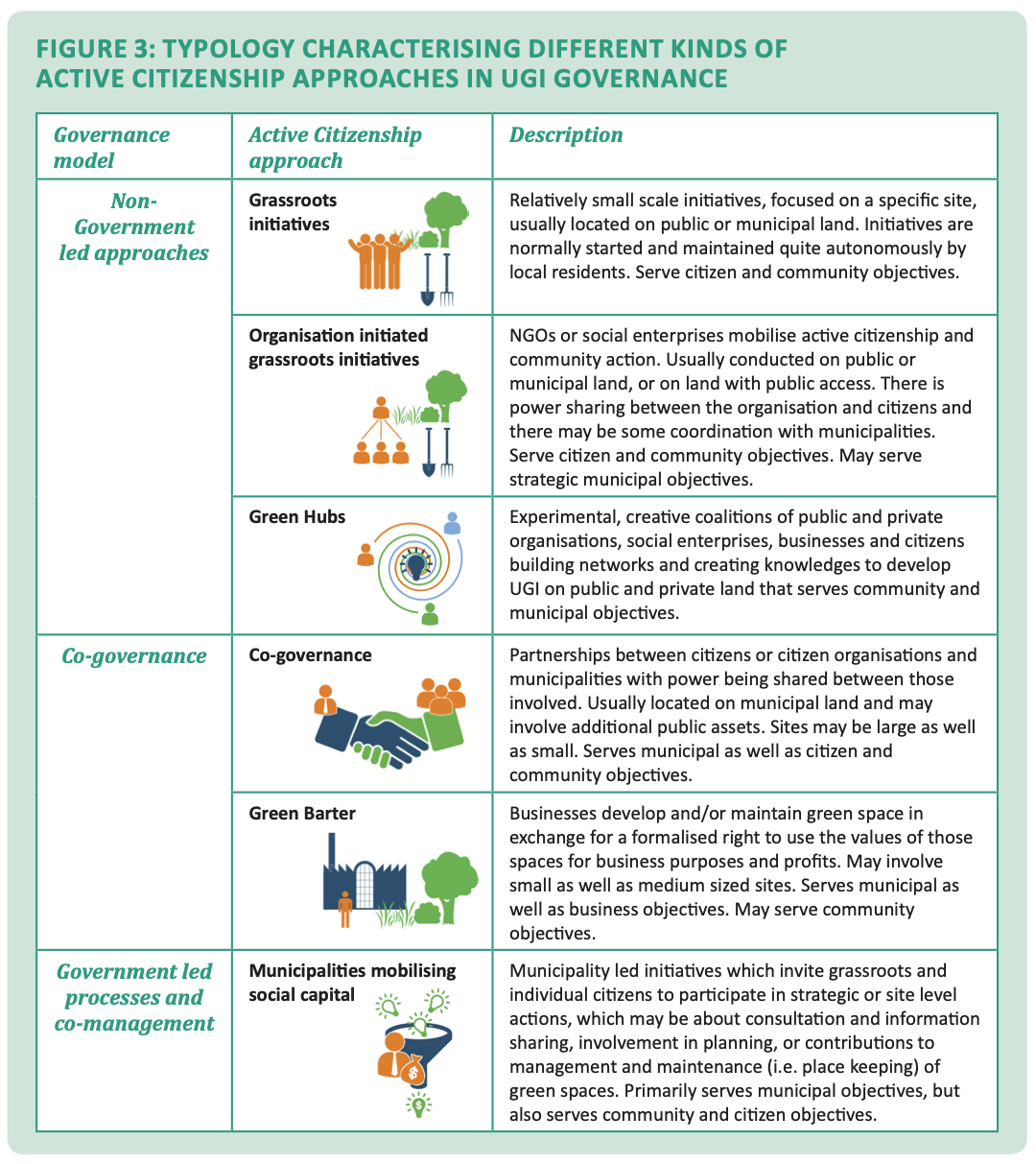Module 7: Green Infrastructure Governance
Learning Outcome
- Gain familiarity with decision-making for GI implementation in different municipalities and the professionals involved in the process.
The benefits of GI have been established in practice and in academic literature, yet not all urban centres have recognized its potential. Reasons for this relate to various factors; a lack of municipal capacity and technical expertise, the need for new regulatory requirements, uncertainty regarding industry capacity, unfamiliarity with related risks and opportunities, and conflicting goals and mandates of municipal departments and institutions (Tayouga, 2016; Dhakal, 2017; Young et. al., 2014). Addressing the uncertainties and obstacles to GI implementation is essential to ensuring that environmental damage from 20th century urbanization does not continue throughout the 21st.
Grey infrastructure systems have been the keystone of 20th century urbanization. For green infrastructure to become integrated as standard practice for urbanization in the 21st century, design principles and operating procedures must become as understood, reliable and accessible as those used for traditional grey infrastructure design. Transitioning towards new infrastructure typologies requires significant administrative resources, technical capacity, and political will. While climate change is a global phenomenon, the responsibility for managing its impacts will fall largely on the shoulders of regional and municipal governments. This module will explore the strategies and processes employed by municipalities, regions, and nations to govern green infrastructure and promote high-quality, successful systems. Case examples will be analyzed to explore both the determinants of success and the challenges that remain for successful GI governance.
As the Porse article suggests, “Governance typically describes rules for decision-making involving many stakeholders, including individuals, civic organizations, and government institutions, in the context of laws and policies. Governance is distinguished from governmental actions to recognize flexibility, decentralization, and inclusiveness of private and community participants, who may have established, extra-governmental processes for managing environmental resources.”
To effectively implement GI, municipal policies and procedures must consider the additional challenges inherent to approving, maintaining, and expanding a publicly accessible and decentralized infrastructure grid. Changing institutions and policies related to infrastructure management involve changing the primary mode by which citizens and corporations interact with their municipal government. Successful GI governance requires top-down, lateral and bottom-up approaches depending upon the specific topic at hand and the target audiences being sought. As the primary managers of infrastructure systems, top-down directives from governments will play a primary role, supported by the numerous non-government organizations that conduct the community outreach, secure community partners for pilot projects, etc. in addition to government agencies ( i.e., Federation of Canadian Municipalities). GI success relies on the involvement and support of local citizen collaborations with government agencies, private sector developers and practitioners who are often the one’s responsible for implementing and maintaining GI systems.
As this chart from Danish researchers suggests, governance innovations in GI implementation involve a spectrum of stakeholders leaders including NGOs, Citizens and Governments.
Source: Figure 3: Typology Characterising Different Kinds of Active Citizenship Approaches in UGI Governance is found on page 16 of Report on the Green Surge in Denmark, University of Copenhagen (2017).https://www.e-pages.dk/ku/1337/html5/
This module will look at three distinct governance regimes for green infrastructure implementation: centralized GI control in Singapore, federally motivated GI in New York City, and locally directed GI in Rotterdam. Each of these governance mechanisms has distinct strengths and weaknesses that will be explored in the readings and module discussions. In Singapore, centralized control has allowed for the quick implementation of a broad array of green infrastructure programs. Some of these programs are implemented at great expense, such as a program to cover 50% of rooftop greenery expenses. In Rotterdam, a series of floods and droughts has led to a comprehensive, city-led climate adaptation strategy that encourages experimentation to pursue customized solutions for local context. Each of these systems often require approval from multiple government agencies, requiring extensive cooperation between municipal agencies, private sector actors, and researchers. In New York City, frequent combined sewer overflows in violation of the federal Clean Waters Act have led to a focusing of resources towards water retention and quality improvements. To save costs and ensure high-performing systems, the City has created a suite of standardized designs and procedures that increase implementation rates but may also stymie innovative and adaptable designs. In the short term these changes have been useful however these very same measures may also inadvertently thwart innovative and adaptable GI designs.
Learning Activities
- After reviewing the video and reading the Porse article on goverance, select at least one of the two case studies and describe the array of GI Tools implemented, the range of policies to incentivize and regulate GI projects and the importance given to the role of partnerships – public-private, and community-based.
Discussion Questions
- Why might green infrastructure systems need different forms of governance than traditional infrastructure?
- How can governance regimes become more inclusive to the variety of stakeholders in green infrastructure?
Readings & Resources
Readings
- Porse, E. (2013). Stormwater Governance and Future Cities. Water (Basel), 5(1), 29–52. https://doi.org/10.3390/w5010029
- Blue and Green Cities
- Rotterdam – Becoming a Blue-Green City
- Singapore – Becoming a Blue-Green City
Videos
Additional Resources and Citations
- Handbook on Green Infrastructure Planning, Design, and Implementation
- The Governance and Management of Public Green Spaces – pg. 337-354
- Young, R. F., & McPherson, E. G. (2013). Governing metropolitan green infrastructure in the United States. Landscape and Urban Planning, 109(1), 67–75. https://doi.org/10.1016/j.landurbplan.2012.09.004
- Zhang, D., Gersberg, R. M., Ng, W. J., & Tan, S. K. (2017). Conventional and decentralized urban stormwater management: A comparison through case studies of Singapore and Berlin, Germany. Urban Water Journal, 14(2), 113–124. https://doi.org/10.1080/1573062X.2015.1076488
- Green Planning for Cities and Communities: Renaturing Cities
- Green and Blue Urban Spaces as Paradigms for Urban Planning – pg. 43-67


